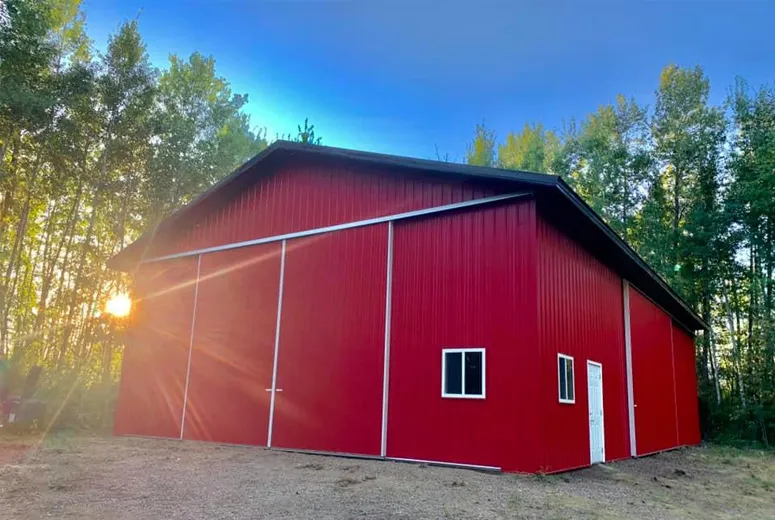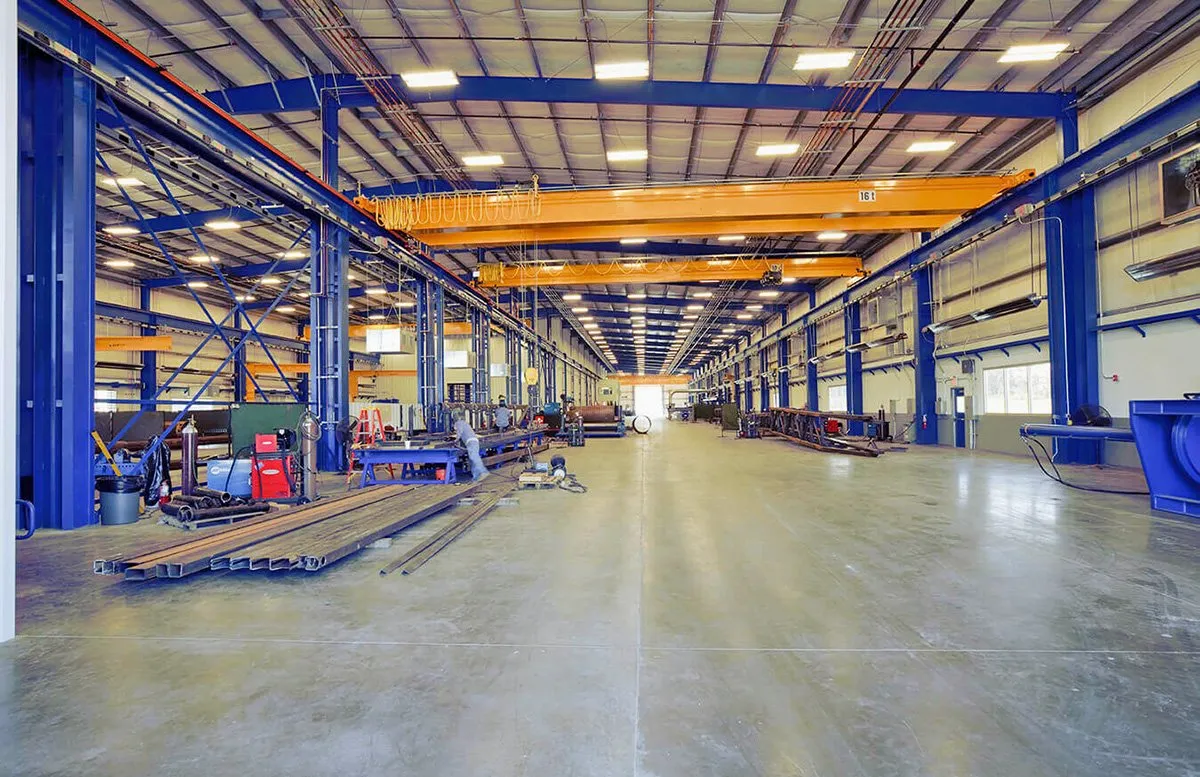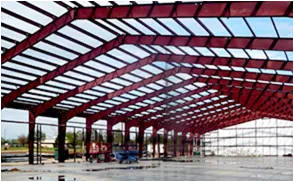Steel structures are often considered the most economical and fastest way to build warehouses, making them the first choice for many industrial and civil buildings. We provide structural steel warehouse designs and machine profiles into a variety of shapes and sizes according to your specific application and specification.
A steel structure warehouse is a frame building, in which the frame structure is mainly composed of steel beams and steel columns. Steel structures can be made by hot or cold rolling.
For roof and wall panels, we offer steel, fiberglass, PU sandwich panel options and more.
Curved metal roof structures are also a good choice for your project.
The doors and windows of the steel frame structure warehouse can be made of PVC or aluminum alloy.
Regarding the purlin support system, wall purlins and roof purlins are available in C-shape and Z-shape.
Also, the crane runway beam is based on your overhead crane parameters.
Based on your specific requirements for the size of the steel silo and local environmental conditions, we can design the silo in any shape and size to meet your needs.
Steel is renowned for its remarkable strength-to-weight ratio, making it an ideal material for constructing large structures. Unlike traditional building materials such as wood or concrete, steel can withstand extreme weather conditions, including heavy winds and earthquakes. This inherent durability ensures that industrial steel structures have a long lifespan, requiring minimal maintenance over the years. Furthermore, steel’s resistance to pests and rot means that buildings can maintain their structural integrity without the frequent repairs that wooden structures demand.
In conclusion, the importance of industrial buildings in economic development cannot be overstated. They are instrumental in job creation, fostering innovation, promoting ancillary businesses, and influencing regional growth. As the world continues to evolve technologically and environmentally, the design and function of industrial buildings will be integral in shaping the future of economies globally. Policymakers must continue to recognize and support the industrial sector, ensuring that it remains robust and capable of meeting the challenges of tomorrow while driving sustainable economic growth.
One of the most significant advantages of a metal shed is its durability. Unlike wooden sheds, which can be susceptible to rot, pests, and extreme weather conditions, metal sheds are crafted from high-quality materials that are designed to withstand the elements. Galvanized steel, for instance, is rust-resistant and can endure harsh climates, ensuring that your shed remains intact year after year. This longevity makes a metal shed a cost-effective investment, as it eliminates the need for frequent repairs or replacements.
Incorporating an office space within a metal garage is an innovative way to create a dedicated work area without compromising on functionality. When designing the office, it’s crucial to consider aspects such as lighting, insulation, and organization. Natural light is essential for maintaining focus and motivation, so large windows can be an excellent addition, promoting a pleasant working environment. Moreover, insulating the space ensures comfort year-round, allowing for productivity regardless of external weather conditions.
2. Automation and Technology Integration The integration of technology into industrial warehouses is transforming operations. Automated systems such as robotic shelving, conveyor belts, and automated guided vehicles (AGVs) are enhancing efficiency and reducing labor costs. Furthermore, warehouses are now equipped with advanced software solutions for inventory management, tracking shipments in real time, and optimizing storage layouts to maximize space.
One of the primary benefits of prefabricated buildings is their adaptability. These structures can be customized to meet the specific requirements of various agricultural activities, whether it’s for housing livestock, storing equipment, or processing crops. This flexibility allows farmers to create spaces tailored to their operations, ensuring optimal functionality and efficiency. Moreover, as farming practices evolve, these buildings can be modified or expanded with relative ease, thus extending their useful life without the need for complete reconstruction.
Moreover, metal lofted barns boast a modern and sleek design that can complement various architectural styles. With the ability to customize colors, sizes, and layouts, owners can create a barn that not only serves its purpose but also enhances the overall aesthetic of their property. Whether situated on a sprawling farm or alongside a suburban home, a well-designed metal lofted barn can become an attractive focal point.



